Hello all,
Today I would like to start a series covering Albanian Folk Costume. For a relatively small nationality, the Albanians have a remarkable number of Folk Costumes. For this reason, this series will have 4 or 5 parts. Besides residing within the current borders of Albania, the Albanian people also reside in neighboring regions of Montenegro, Kosovo, North Macedonia and Greece, and have a notable community in Italy.
The traditional attire of these villages is derived much more from that of Italy rather than Albania, with a couple exceptions. In most cases only the female costume has been retained. The men generally either wear suits, made up costumes, or imitations of costumes from Albania proper.
The two images at the head of the article show first, The costume of Spezzano Albanese in Calabria, with two men in Gheg costume, and second, The costume of Piano degli Albanesi in Sicily, with a man in Tosk costume.
I will proceed north to south. Each of these places has a name in the Arbëreshë language, and one in Italian. In addition, it may have an additional name in the local language or dialect [eg. Calabrian or Sicilian]. Not every community on the map has preserved a local folk costume.
Abruzzo
Badhesa, in Italian, Villa Badessa
This is the northernmost Arbëreshë settlement, and was founded relatively late, in 1743. The language has been revived.

This folk costume is distinct, being of a Balkan type, with little Italian influence. It consists of a chemise, front and back aprons, and a long vest with short sleeves in the Dinaric style. The men's costume is also preserved, or rather, revived, based on the military uniforms worn by the first settlers, including a modest fustanella.Notice that some of the people below are wearing a more Italianate costume.
Molise
There are a handful of communities in Molise that remember their Arbëreshë heritage, but little is remembered of the traditional costume.
Rùri, in Italian: Ururi
I have found nothing from this village.
Portkanuni, in Italian: Portocannone
From this village I have found one image of a wall painting.
Këmarini, in Italian: Campomarino
Just a couple images
Just a handful of images
Campania
Katundi, in Italian: Greci
Sandë Jacuvë, in Italian: Monte San Giacomo
This community is not shown on the map, but this is its approximate location.
This community has a performing group. The costumes they use are typical of Italian folk costumes of the area. However, they are rooted in the traditional clothing of this community.
Puglia
I have found no information on the communities in the north of this Paese, I would assume that they are similar to those in Molise.
The following two communities are both in the neighborhood of Taranto.
In Puglese: Muntiparanu, in Italian: Monteparano
Italian sources confirm that this was an Arbëreshë community, but that they have been assimilated, and I was unable to find the name of the community in the Arbëreshë language. The only information which I was able to find are the following two sketches.
Shën Marcani, in Italian: San Marzano di San Giuseppe
This community has a performing group which uses a remembered or reconstructed costume which is very Italianate.
Basilicata
Barilli, in local dialect Barìlë, in Italian: Barile
This is another group of villages whose clothing tradition is largely forgotten.
Mashqiti; in Italian: Maschito
This community lies some 20 km to the southeast of Barile
Shën Palji and Shën Kostandini, in Italian: San Paolo Albanese and San Costantino Albanese
This is the first of several costume traditions which have been well maintained.
These two villages face each other across a valley. They seem to share a common, quite distinctive, costume tradition.
First, a few images from San Paolo
Calabria
Kastërnexhi, in Italian Castroregio, in Calabrian: Castrurìgiu
Pllatëni, in Italian: Plataci, in Calabrian: Pràtaci
Frasnita, in Italian: Frascineto
this neighboring village has similar traditional dress.
Shën Vasili, in Italian: San Basile
Firmoza, in Italian: Acquaformosa
This region also includes the two neighboring villages of
Ungra, in Italian: Lungro
and
Ferme, in Italian: Firmo, in Calabrian: Fìrmu
In this region, the overskirt is sewn shorter, with a tail.
Picilia; in Italian: Santa Caterina Albanese
Shën Benedhiti, in Italian: San Benedetto Ullano area
Çervikati, in Italian: Cervicati, in Calabrian: Cirvicàtu,
Mungrasana; in Italian: Mongrassano
Mungrasana; in Italian: Mongrassano
Qanë; in Italian: Cerzeto
Shën Mërtiri; in Italian: San Martino di Finita
Shën Benedhiti or San Benedetto Ullano
Mungrasana; in Italian: Mongrassano
Qanë; in Italian: Cerzeto
Shën Mërtiri; in Italian: San Martino di Finita
Spixan, In Italian: Spezzano Albanese area
To the south lie a string of villages all along the same valley, including:
Shën Sofia e Epirit; in Italian: Santa Sofia d'Epiro
Shën Mitri; in Italian: San Demetrio Corone
Strigàri; in Italian: San Cosmo Albanese in Calabrian: San Cuòsimu
Vakarici; in Italian: Vaccarizzo Albanese
Mbuzati; in Italian: San Giorgio Albanese
I have already written a more in depth article on this region:
Spixan, or Spezzano
Shën Sofia e Epirit; in Italian: Santa Sofia d'Epiro
Shën Mitri; in Italian: San Demetrio Corone
Strigàri; in Italian: San Cosmo Albanese in Calabrian: San Cuòsimu
Vakarici; in Italian: Vaccarizzo Albanese
Mbuzati; in Italian: San Giorgio Albanese
Fallkunara, in Italian: Falconara
Here is the local performing group with boys in Gheg costume.
Karfici, in Italian: Carfizzi
Shën Koli; in Italian: San Nicola dell'Alto
This is another village in this region with a similar costume.
Zagarise : Zagari
Andali: Andalli
Marcedusa: Marçëdhuza
From this group of villages, I have found only one image, from Marcedusa
Garrafë, In Italian, Caraffa di Catanzaro
This region has a very different costume, including a wide sleeved chemise with embroidery on the sleeves and shoulders. Costumes more similar to those above are also known, most likely dating from a later period.
Sicilia [Sicily]
Callìcari; in Italian: Biancavilla
This town lies outside Catania, and is not shown on the map. Here is its approximate location. The Albanian language is no longer spoken here, but they remember their heritage. Versions of old Albanian upper class costumes are worn here for the equivalent of a Renaissance Fair.
Hora e Arbëreshëvet, in Italian, Piana degli Albanesi
This costume region also includes the communities of
Kuntisa; in Italian: Contessa Entellina, and
Sëndahstina; in Italian: Santa Cristina Gela
This is possibly the best kept of all the Costume traditions of the Arbëreshë.
You will see men in both Gheg and Tosk costumes, although Tosk predominate.
Thank you for reading, I hope that you have found this to be interesting and informative.
I am glad to bring more attention to this little known tradition.
Roman K>
email: rkozakand@aol.com
Source Material:
Besides many online sources, I took much of the material from
Gerardo Sacco et al, 'Ori e Costumi degli Albanesi', Castrovillari, 1996
01.jpg)






01.jpg)


02.jpg)












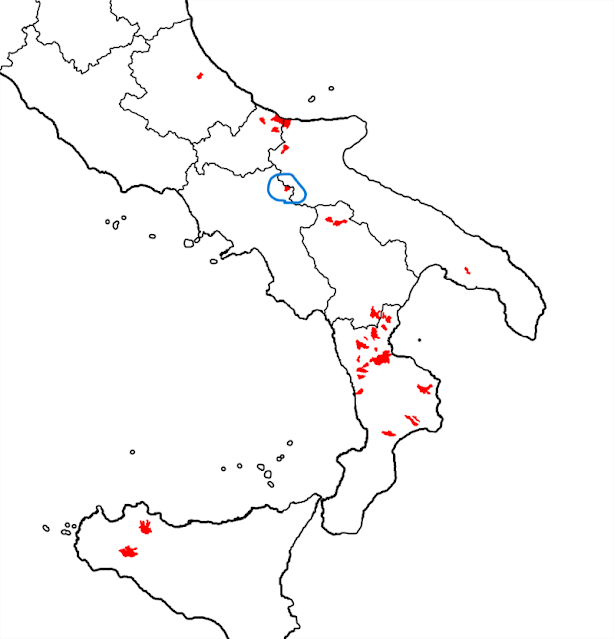
_-_Danze_Tradizionali_Arbereshe_nel_piazzale_antistante_la_Chiesa_di_San_Bartolomeo.jpg)











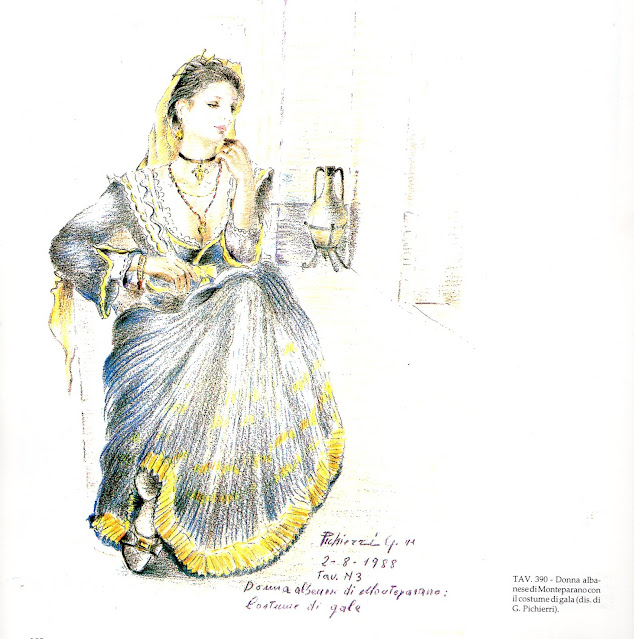







.png)
.png)
.png)
.png)
.png)
.png)
.png)

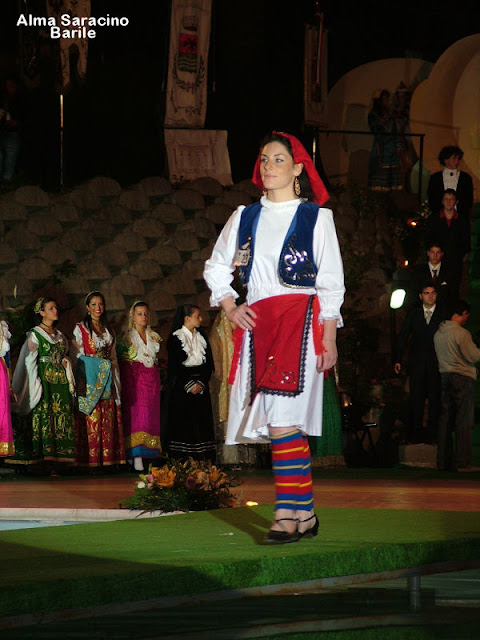









06.jpg)
.jpg)









.jpg)






.jpg)


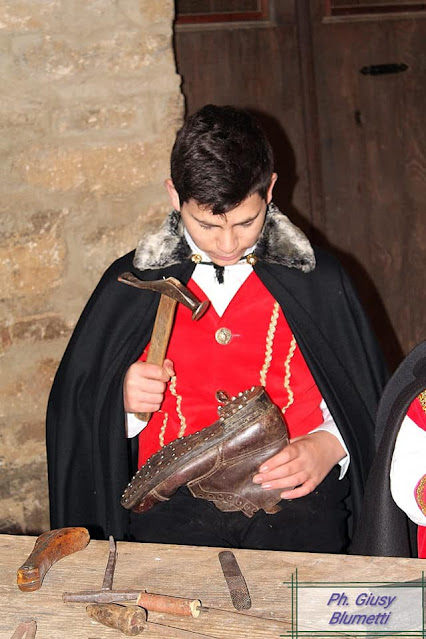








03.jpg)






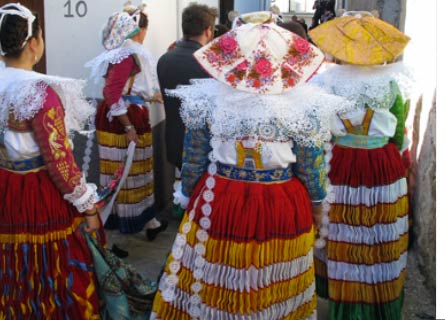


















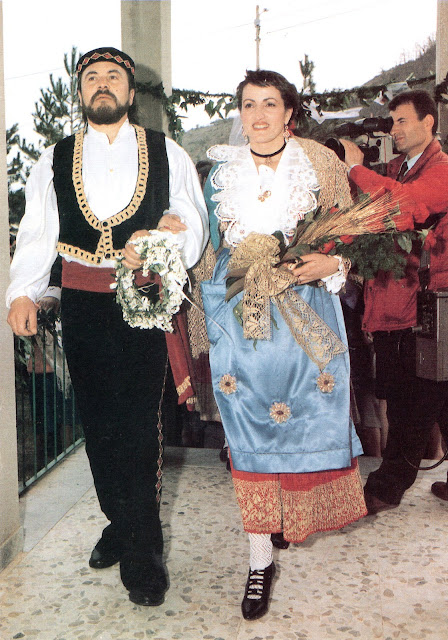





























08.jpg)
01.jpg)
02.jpg)
05.png)
06.png)

















03.jpg)


.jpg)
.jpg)
.jpg)
.jpg)













































































05.jpg)
02.jpg)










05.png)















01.jpg)
























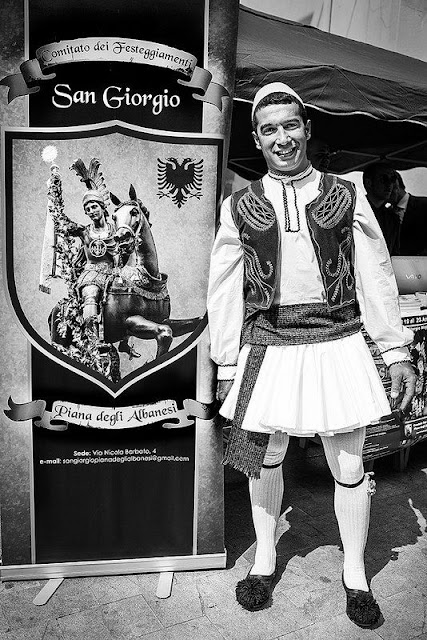








































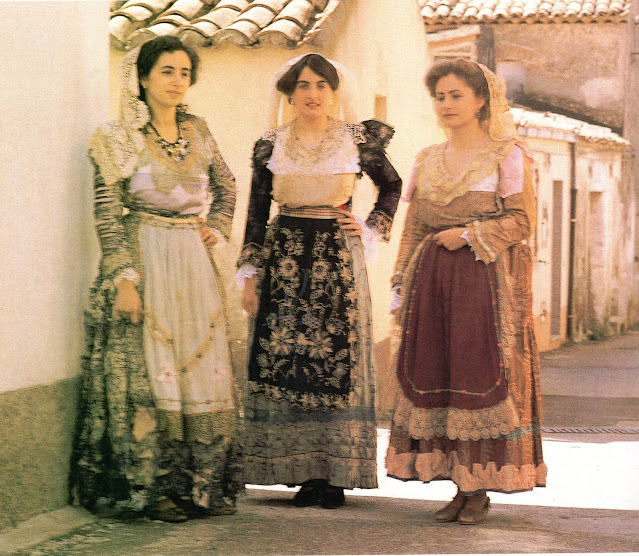











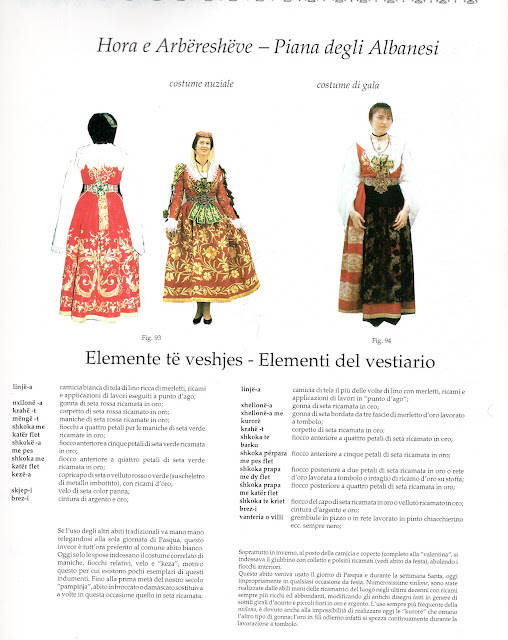











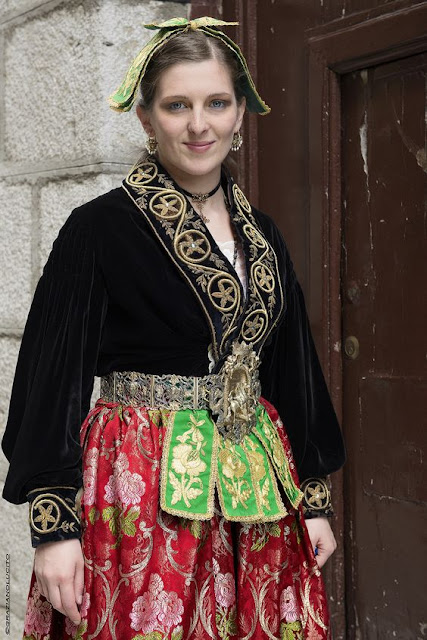







I will be coming back to this post! I could only skim but noticed one area that features strands of lace of some sort hanging down the back of the bodice area - some look like crocheted lace but some looks like bobbin lace. Is this something that came with them or that got picked up from the local Italians? Charlotte in California
ReplyDeleteThe lace in these costumes is definitely something picked up from the Italians. In the Balkans, neither bobbin nor crotched lace were done. There was some limited use of needle lace, which originated in Armenia, but was picked up and transmitted by the Turks.
DeleteThank you. I appreciate having you there, sharing all your findings - I am not at all computer literate so your research is of great value to me. Charlotte in California
DeleteThis comment has been removed by a blog administrator.
ReplyDeleteThis comment has been removed by a blog administrator.
ReplyDeletenë një shtëpi që dikur jehonte nga të qeshurat, heshtja ishte vendosur si një mjegull e rëndë. Burri im, dashuria e jetës sime, ishte larguar dhe fjala "divorc" rrinte në ajër si një re e errët. Ndjeva se zemra ime thyhej pak më shumë çdo ditë, e dëshpëruar për të mbajtur dashurinë që ndamë dikur.
ReplyDeleteNë kërkimin tim për përgjigje, u ndesha me Dr. Dawn, një magjistar i dashurisë, i cili premtoi të ndihmonte në rindezjen e dashurisë së humbur. Skeptik por shpresëdhënës, vendosa ta provoj. Me drejtimin e tij, bëra një magji të mbushur me dëshirat e mia më të thella për dashuri dhe lidhje.
Për mrekulli, të nesërmen, im shoq u kthye në shtëpi, me sytë më të butë, të mbushur me vetëdije. Ai më shihte jo vetëm si partneren e tij, por si mbretëreshën e zemrës së tij. Ai filloi të më trajtonte me respekt, duke kërkuar gjithmonë mendimin tim dhe duke e vlerësuar lidhjen tonë mbi gjithçka.
Dashuria jonë u rindez, më e fortë se më parë. I isha mirënjohëse doktor Agimit, i cili më kishte ndihmuar të gjeja rrugën time për të rikthyer drejt dashurisë që mendoja se e kisha humbur përgjithmonë. Nëse dikush e gjen veten në një luftë të ngjashme, unë rekomandoj me gjithë zemër t'i drejtohet Dr. Dawn për udhëzim. Dashuria ia vlen të luftohet, dhe ndonjëherë, një magji e vogël mund të rindezë flakët e zemrës.
Kontaktoni Dr DAWN në Whatsapp: +2349046229159
Dërgo email dawnacuna314@gmail.com